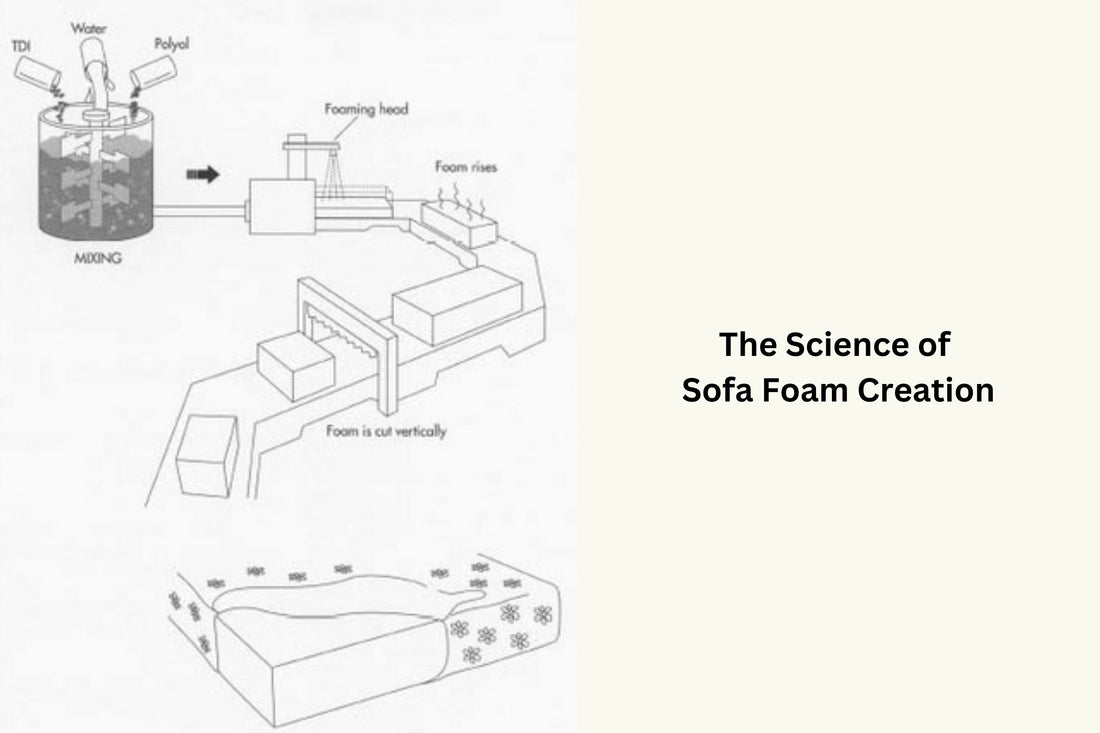
The Science of Sofa Foam Creation
Share
Have you ever wondered how the comfortable foam in your sofa cushions is made? In this blog post, we will explore the fascinating science behind sofa foam creation and how it contributes to your overall comfort.
What is Sofa Foam?
Sofa foam, also known as upholstery foam, is a type of cushioning material used in sofas, chairs, and other furniture. It is designed to provide support and comfort, ensuring a pleasant seating experience.
How is Sofa Foam Made?
The process of creating sofa foam involves several steps. It starts with the raw materials, which typically include polyurethane chemicals, water, and additives. These materials are mixed together to form a liquid foam mixture.
Next, the foam mixture is poured into molds or sprayed onto a surface. During this stage, a chemical reaction occurs, causing the mixture to expand and solidify into a foam structure. The foam is then cured and cut into the desired shape and size.
What Makes Sofa Foam Comfortable?
The comfort of sofa foam is determined by its density and firmness. Density refers to the amount of foam material per cubic foot, while firmness relates to how soft or firm the foam feels when compressed.
Higher density foam tends to be more durable and supportive, while lower density foam is softer and more plush. The firmness of the foam can be adjusted by varying the chemical composition and manufacturing process.
Why is Sofa Foam Important?
Sofa foam plays a crucial role in the overall comfort and longevity of your furniture. It provides the necessary support for your body, allowing you to sit or lie down comfortably for extended periods.
Additionally, sofa foam helps to maintain the shape of your cushions, preventing them from sagging or losing their original form over time. This ensures that your furniture remains aesthetically pleasing and functional for years to come.
Choosing the Right Sofa Foam
When selecting sofa foam for your furniture, it's important to consider your personal preferences and needs. If you prefer a firmer seat, opt for higher density foam. On the other hand, if you prefer a softer, more plush feel, lower density foam may be more suitable.
It's also worth considering the intended use of the furniture. For heavily used pieces, such as a sofa in a busy living room, a higher density foam may be more durable and long-lasting.
In Conclusion
The science behind sofa foam creation is a fascinating process that combines chemistry and engineering to create the comfortable cushions we enjoy in our furniture. Understanding the basics of sofa foam can help you make informed decisions when selecting new furniture or replacing worn-out cushions.
So, the next time you sink into your sofa and feel the plush comfort of the foam beneath you, you can appreciate the science that went into creating that cozy seating experience.
Last updated: 23rd December 2023

1 comment
i need sofa foam making recipy, so please help